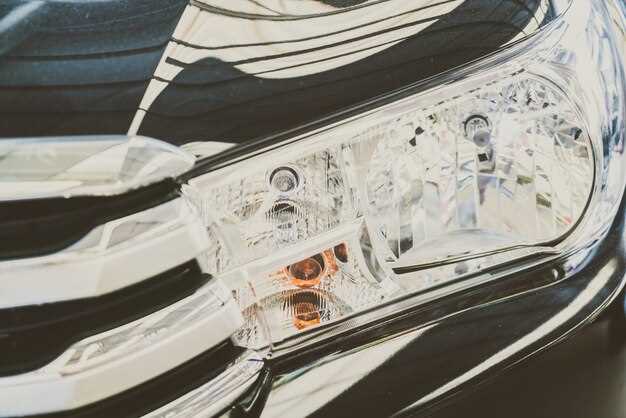
As driving conditions vary from bright sunny days to dark and stormy nights, having optimal visibility on the road is critical for safety. Traditional halogen headlights often fall short in delivering the brightness and clarity needed to ensure a safe driving experience. This has led many vehicle owners to consider upgrading their headlights to LED technology, which promises brighter light output and enhanced performance.
LED headlights offer several advantages over their halogen counterparts. Firstly, they provide a whiter and more focused beam of light, which significantly improves road visibility and allows drivers to see obstacles and pedestrians more clearly. Additionally, LEDs consume less power, thereby reducing the strain on your vehicle’s electrical system and potentially extending the lifespan of your headlights.
Beyond improved visibility, upgrading to LED headlights can also enhance the aesthetic appeal of your vehicle. With a sleek and modern look, LED lights can transform the front end of your car, making it stand out while providing practical benefits. In this article, we will explore the key reasons to make the switch, the installation process, and the various options available in the market to help you make an informed decision.
Choosing the Right LED Headlight Bulbs for Your Vehicle
Selecting the appropriate LED headlight bulbs for your vehicle is crucial for ensuring optimal visibility and safety on the road. The first step is to identify the correct bulb size for your car, which you can find in the owner’s manual or by consulting an online bulb size database. Common sizes include H11, 9005, and 9006, among others.
Next, consider the lumen output of the LED bulbs. Lumens measure brightness, and a higher lumen count typically means better visibility at night. Look for bulbs with at least 2,500 to 3,000 lumens for enhanced clarity without blinding oncoming drivers.
Color temperature is another vital factor. LED bulbs come in various color temperatures measured in Kelvin (K). For a natural daylight effect, opt for bulbs between 5,000K and 6,500K. This range provides a whiter light that enhances contrast and helps reduce eye strain during night driving.
Check the compatibility of the LED bulbs with your vehicle’s electrical system. Some vehicles may require additional components, like a resistor or an anti-flicker adapter, to ensure proper functioning without errors on the dashboard.
It’s essential to choose high-quality brands that are known for durability and performance. Look for bulbs that have been rigorously tested for longevity, temperature resistance, and weatherproofing to withstand various driving conditions.
Finally, read customer reviews and ratings to gauge real-world performance. Feedback from other drivers can provide insights into the brightness, ease of installation, and overall satisfaction with the bulbs.
Step-by-Step Guide to Installing LED Headlight Bulbs

Upgrading to LED headlight bulbs can significantly enhance your vehicle’s visibility and safety. Follow this detailed guide to install them correctly.
Step 1: Gather Your Tools and Materials
Before you begin, gather the necessary tools: a pair of gloves, a screwdriver (flathead and Phillips), and a socket wrench if needed. Ensure you have the correct LED headlight bulb model compatible with your vehicle.
Step 2: Prepare Your Vehicle
Park your vehicle on a flat surface and turn off the engine. Engage the parking brake and, if necessary, disconnect the battery to prevent any electrical shorts.
Step 3: Access the Headlight Assembly
Open the hood of your vehicle. Locate the back of the headlight assembly. Depending on your car model, you might need to remove the battery or other components to gain access. Refer to your vehicle owner’s manual for specific instructions.
Step 4: Remove the Old Bulbs
Locate the bulb holder at the rear of the headlight assembly. Twist or unclip the holder counterclockwise to remove it. Pull the old bulb straight out to detach it from the socket. Avoid touching the glass part of the new LED bulb, as oils from your fingers can cause it to fail prematurely.
Step 5: Insert the LED Bulbs
Take your new LED bulb and align it with the socket. Push it gently but firmly until it is seated securely. Twist the bulb holder back into place, ensuring it locks in securely.
Step 6: Test the New Headlight
Before reassembling everything, it’s wise to test the new LED headlights. Reconnect the battery if you disconnected it. Turn on your vehicle and switch on the headlights to check if the new bulbs function properly.
Step 7: Reassemble the Components
If the bulbs are working correctly, proceed to reassemble any components you removed to access the headlight assembly. Ensure everything is secured and properly positioned.
Step 8: Adjust Headlight Alignment
Finally, check and adjust the headlight alignment if necessary. Park your vehicle on a level surface about 25 feet from a wall, turn on the headlights, and make adjustments until the beams are aimed correctly.
By following these steps, you will successfully install LED headlight bulbs and improve your night-time driving experience.
Benefits of LED Headlights Over Halogen Options

LED headlights offer numerous advantages over traditional halogen options, making them a popular choice for vehicle owners seeking improved performance and efficiency.
- Enhanced Brightness: LED headlights produce a brighter and more focused light, improving visibility on dark roads. This clarity helps drivers see further ahead and react to potential hazards sooner.
- Energy Efficiency: LEDs consume less power compared to halogen bulbs. They convert a higher percentage of energy into light rather than heat, allowing for better energy conservation and reduced load on the vehicle’s electrical system.
- Longer Lifespan: LED headlights have a significantly longer lifespan, lasting up to 25,000 hours or more. In contrast, halogen bulbs typically last around 1,000 hours, reducing the frequency of replacements.
- Improved Safety: With a wider color temperature range, LEDs can produce a daylight-like effect, reducing eye strain for drivers and increasing overall safety by improving road visibility.
- Durability: LEDs are more resistant to shocks and vibrations, making them a more durable option for vehicles, especially in rugged or off-road conditions.
- Instant Illumination: LED lights reach full brightness instantly, unlike halogen bulbs, which can have a slight delay. This feature is crucial in emergency scenarios where immediate visibility is necessary.
In summary, upgrading to LED headlights not only enhances visibility but also contributes to greater safety, efficiency, and convenience, making them a superior choice over halogen options.


